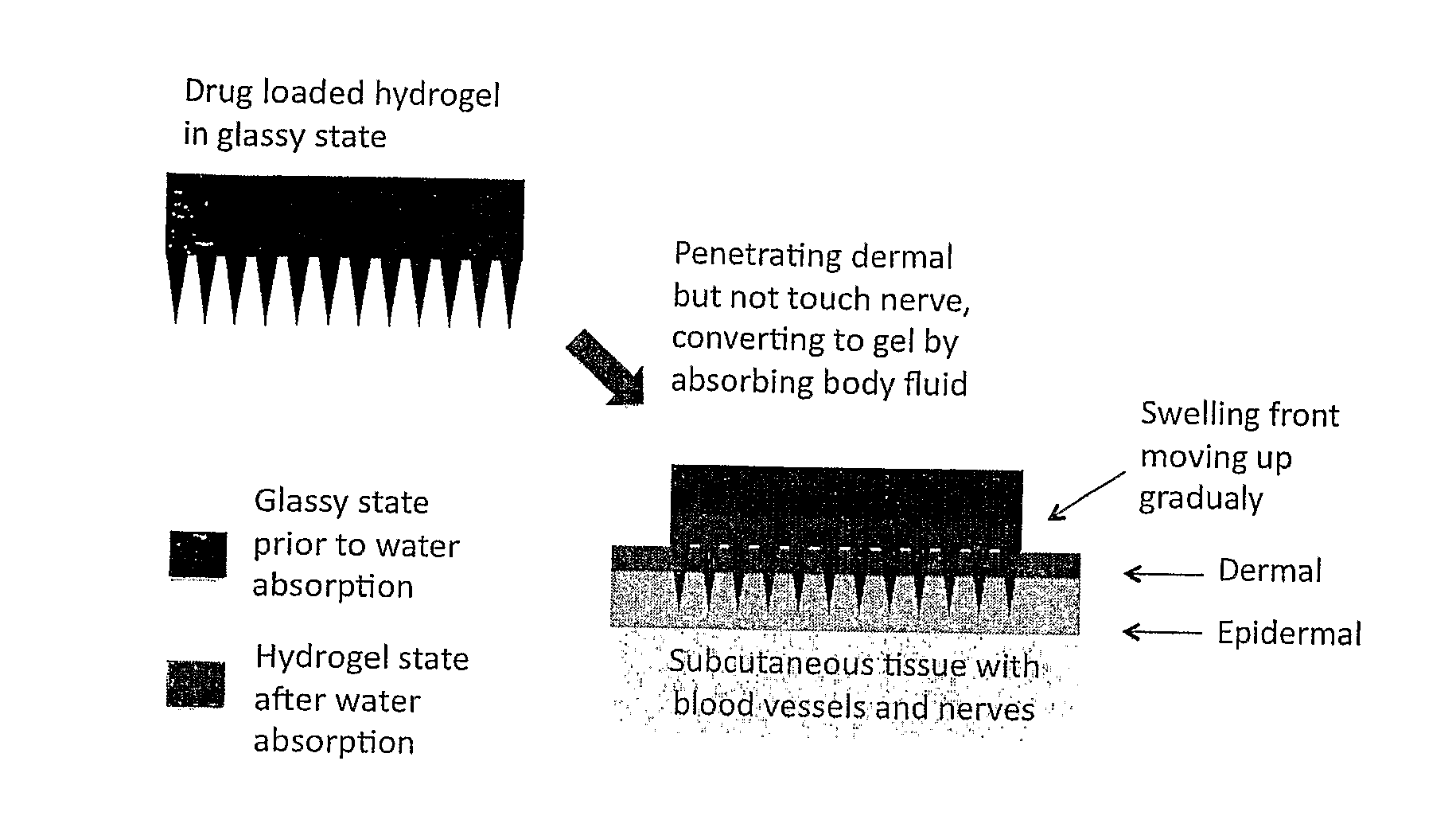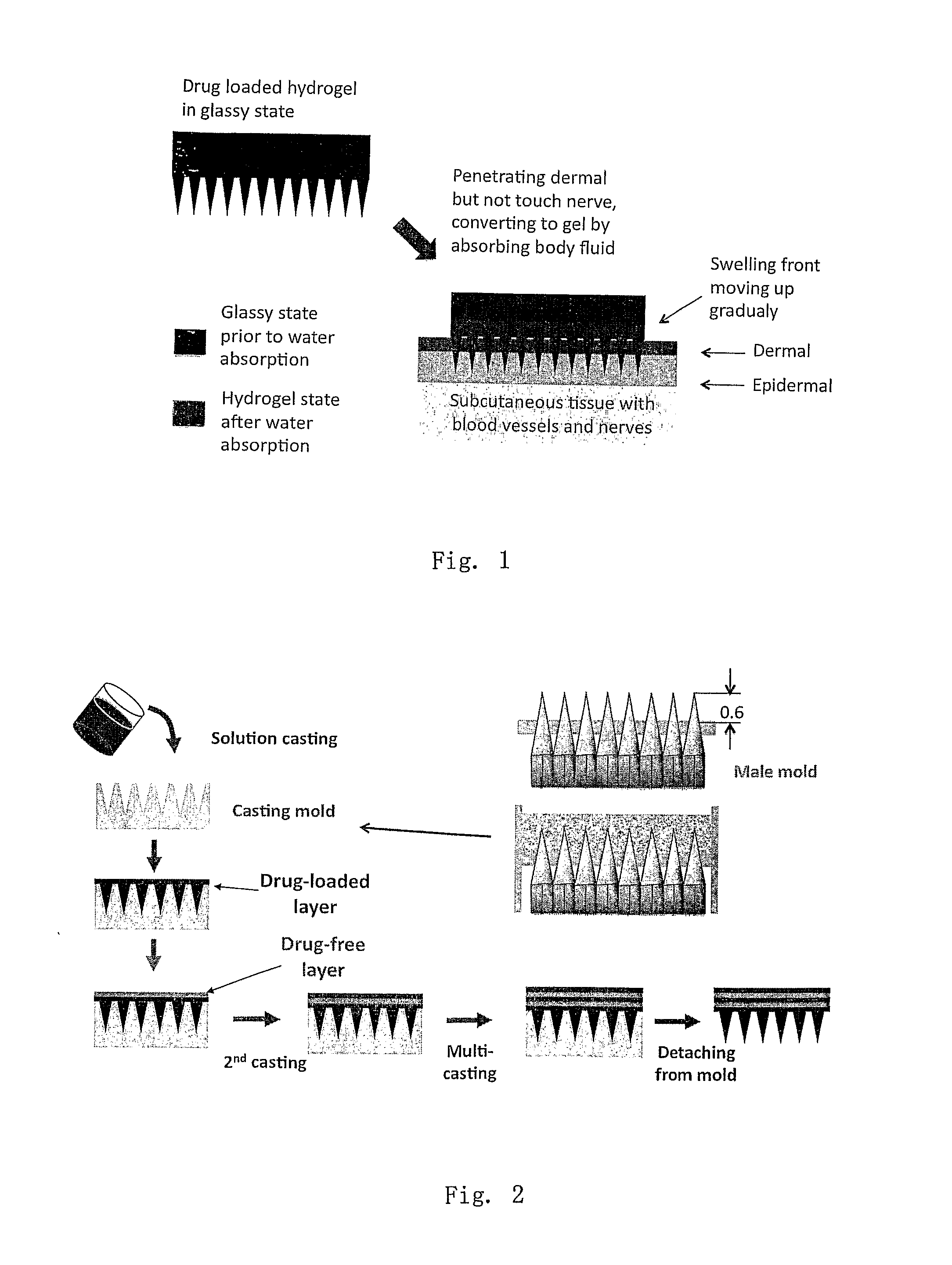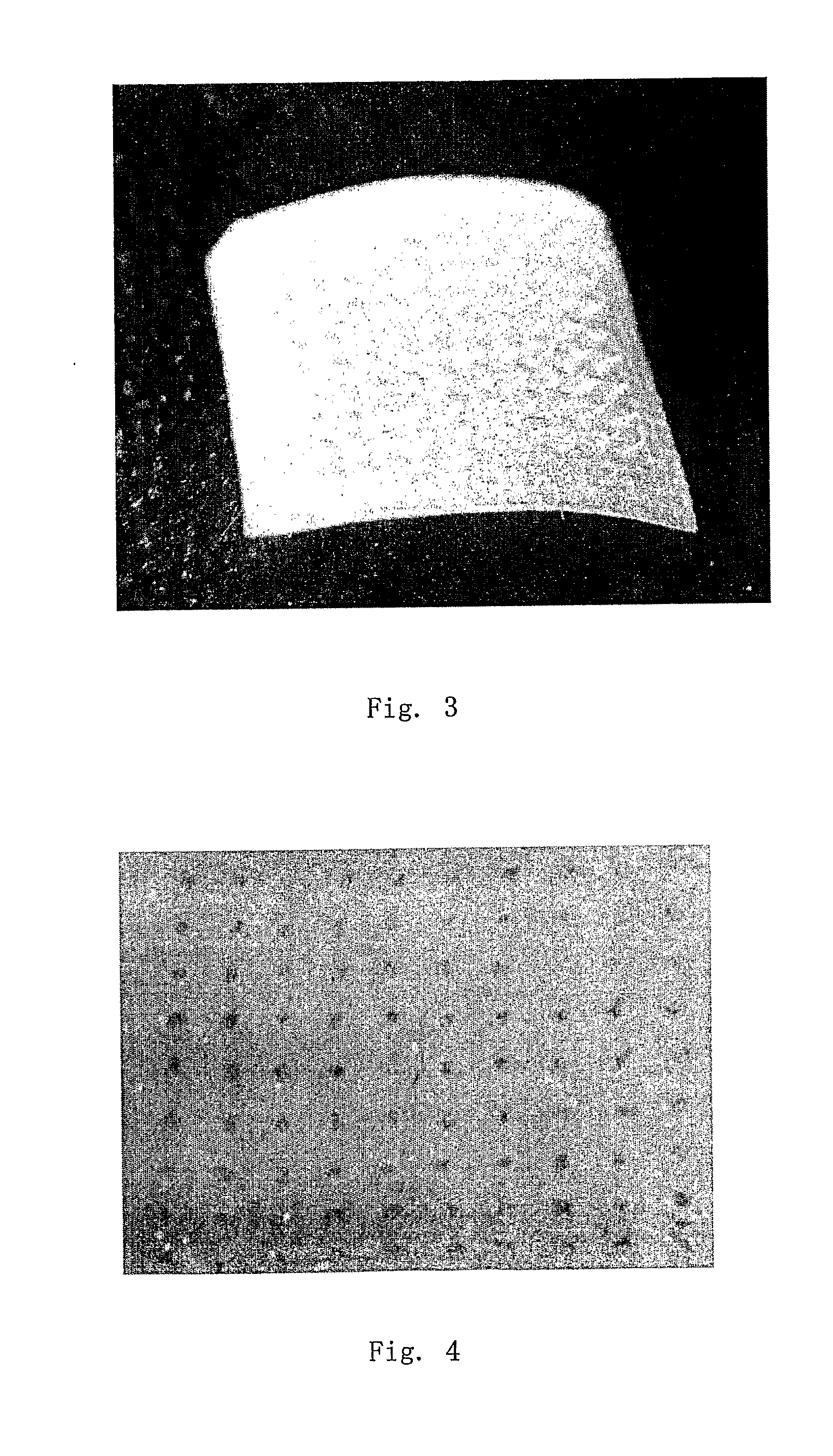Phase-transition polymeric microneedles
a polymer and phase-transition technology, applied in the field of polymeric microneedle patch, can solve the problems of skin irritation, delay the recovery of skin punched holes, and the cost of micro-needle arrays made by mems technology,
- Summary
- Abstract
- Description
- Claims
- Application Information
AI Technical Summary
Benefits of technology
Problems solved by technology
Method used
Image
Examples
example 1
Preparation of Phase-Transition Microneedle Patch Using Polyvinyl Alcohol (PVA) and Dextran
[0044]A mixed aqueous solution of PVA (15% by weight in concentration and 10,000-250,000 in weight-average molecular weight) and dextran (0-3% by weight in concentration and 6,000-5,000,000 in weight-average molecular weight) was casted on a gypsum mold consisting of an array of microholes. After casting the polymer solution on the mold, vacuum was applied on the other side of the mold to suck the polymer solution into the microholes. Drugs to be delivered (such as insulin) were added in the mixed polymer solution before casting onto the mold. After filling the microholes with the polymer solution, the sample was cooled to freeze the water-based solution. The sample may be frozen again after it is warmed up to room temperature and the freeze-thaw treatment may be repeated several time to adjust the density of the crystalline cross-linking junctions of PVA. Then, the top surface of the polymer ...
example 2
Release Kinetics of Insulin from Microneedle Patches
[0047]To test release profiles of insulin, the microneedle patches prepared as above were attached to a model skin mounted on a Franz diffusion cell filled with PBS buffer at pH 7.4 being stirred at 100 rpm (as the receiving pool). The patch was covered with plastic film to prevent water evaporation from the top. Release kinetics of insulin from the patch was examined at 37° C. by assaying the insulin concentration change in the PBS buffer. Sample was taken from the receiving cell at a programmed time and assayed for insulin concentration using HPLC. Profiles of the cumulative release of insulin from the phase-transition microneedle patches formed via various cycles of freeze-thaw treatment and formed of PVA and dextran at various ratio are shown in FIG. 5 and FIG. 6, respectively.
[0048]FIG. 5 shows the cumulative release profiles of the patches prepared at fixed PVA / dextran weight ratio (80 / 20) and varied freeze-thaw cycles (2,4 a...
example 3
Preparation of Layered Phase-Transition Microneedle Patches Via Programmed Casting (Molding)
[0049]Two methods were used to prepare layered phase-transition microneedle patches: repeated casting and assembling of pre-formed sheets. For whatever the method, the layer of microneedle array formed by casting a polymer solution on the mold having an array of microholes. For the repeated-casting method, a layer of drug-free solution (or drug-reduced solution) was casted on the top of the first layer after the freezing treatment (some time the freezing step was omitted). This operation was repeated several times till the designed structure was achieved. FIG. 2 shows the fabrication process schematically. The drug concentration and thickness of each layer may be varied to achieve designed release profiles.
[0050]For the assembly method (not shown by figures), after the drug-free or drug-reduced solution was casted on the top of the layer of microneedle array, a pre-formed drug-loaded PVA-dext...
PUM
| Property | Measurement | Unit |
|---|---|---|
| Temperature | aaaaa | aaaaa |
| Temperature | aaaaa | aaaaa |
| Molar density | aaaaa | aaaaa |
Abstract
Description
Claims
Application Information
 Login to View More
Login to View More - R&D
- Intellectual Property
- Life Sciences
- Materials
- Tech Scout
- Unparalleled Data Quality
- Higher Quality Content
- 60% Fewer Hallucinations
Browse by: Latest US Patents, China's latest patents, Technical Efficacy Thesaurus, Application Domain, Technology Topic, Popular Technical Reports.
© 2025 PatSnap. All rights reserved.Legal|Privacy policy|Modern Slavery Act Transparency Statement|Sitemap|About US| Contact US: help@patsnap.com



